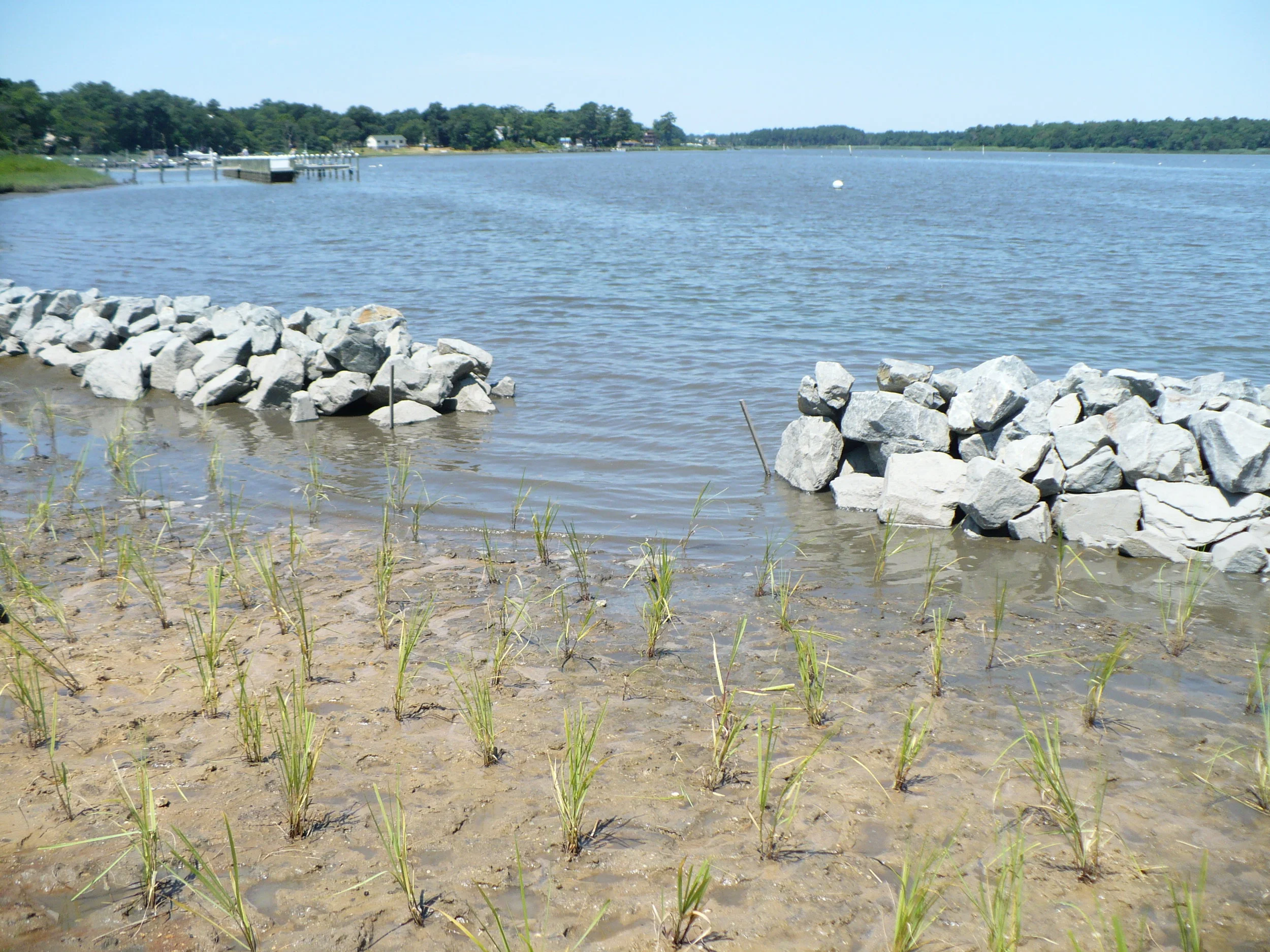Interested in having a living shoreline installed on your property, but not sure where to start? Take a look at the list below for some tips to get you started in the right direction.
Considerations: Why install a living shoreline?
Before you start the process of designing and installing a living shoreline on your property, it is important to think about the issues you are trying to address so you can determine the overall goal of your living shoreline.
It is important to remember that a living shoreline can serve multiple purposes and benefits if designed correctly. What is the goal or goals you have for your living shoreline? Does the property have an erosion problem, or do you want to “green-up” your shoreline? Other issues to address could be to:
Repair an eroding shoreline
Increase resiliency to sea level rise
Replace a collapsing bulkhead
Create habitat
site evaluations: What are the current conditions of your shoreline?
Every shoreline has several different factors affecting its condition. Conditions like wind and wave energy, erosion, storm exposure, slope, vegetation types, and surrounding land use all play into if a living shoreline will work on a property. Exploring these environmental factors can give you a better understanding of what type of living shoreline design could be installed, as well as what issue the design can address. Many designers and contractors can also assist you with site evaluations.
Wondering if your site will be suitable? You and a designer or contractor can use the living shoreline feasibility model (LSFM) to evaluate types of metrics that assess a specific location.
Site design: design is key to a healthy living shoreline
Types: There are a couple of different types of living shoreline options out there that can be designed to meet your needs. In general, traditional living shorelines are used in areas with little wave energy, and hybrid designs are used in areas with high wave energy or boat traffic.
Materials: The materials used for construction of living shorelines will depend on your design. Some of the basic materials that are found in many living shorelines include: coir logs, coir mats, twine, sand, wooden stakes, shell bags and native plants.
Costs: The costs associated with installing a living shoreline will depend on the type of shoreline you need as well as the contractor you choose to work with. Because of this, it is nearly impossible to generalize costs. It is a good idea to get several quotes from different professionals to decide what the best option is for you. There is also potential funding available for projects.
Consultants: Now that you have decided to install a living shoreline on your property, contacting an experienced professional in living shoreline construction is the next step. Discover helpful tips on finding the right professional for you here.
Browse through examples of site design in the Techniques and Applications of Living Shorelines in Delaware. Be sure to see specific elements in the documents Case Studies.
Permitting: State and Federal Permits are required before installing
If installing a more natural shoreline, there are expedited permitting processes at the state and federal levels to simplify the process. The state expedited permit is called a Statewide Activity Approval (SAA), and the federal expedited permit is called a Nationwide Permit (NWP). To be applicable for these permits, your project must fall within the limiting criteria, maximum project length and width, and have few negative impacts on subaqueous (underwater) lands, water quality and habitat.
If your project does not fall within the criteria listed in the expedited permit process, there are other ways to permit the project. Please see the contacts on the permitting page for more information. You can also hire a living shoreline provider to help navigate the permitting process.
Construction: it may take several weeks or even months to build your living shoreline
Installation of living shorelines can take a few weeks to months depending on the design and timeline of your project. If you are in an area that has shorebirds, horseshoe crabs, or migratory fish, considerations will need to be made to make sure that work is not done during their breeding times. Planting is most effective when it is done in the spring to give the plants the longest time possible to settle in and grow before they die back at the end of the year. Properly installed living shorelines will take a few years to fill in with plants and look like a natural marsh. While they are growing, keep an eye on them for any sudden changes or possible trouble spots.
Adaptive Management: Monitoring and maintenance keep a shoreline healthy
Sometimes, a bit of maintenance and monitoring is required to get your living shoreline just right. Landowners should get into habit of checking regularly on their own shoreline and getting to know it, as that will help with early detection of any potential issues. Though not an all-inclusive list, here are some of the common signs that your living shoreline design might need some tweaking, and how these problems might be solved.
Looking to do more technical monitoring? Are you a practitioner looking for guidance on how to develop monitoring? Take a look at this goal-based framework.








